We walked back up to the rim, not the same way we had come, but continuing around the other side of the alcove. There were lots of signs explaining the plants and their traditional uses.


The trams have been operating since 1974 and now run on biodiesel.

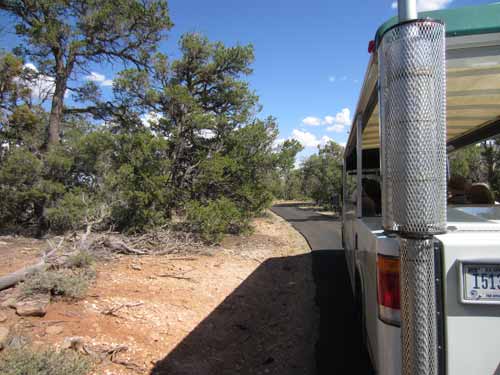

Somehow I don't think it's going to be as bad as the Black Canyon!
On our walk through the forest, Abby talked about the plants and traditional way of life back then.
People have been living in this area for 10,000 years. Living on the land here would not be easy for us, but they had the knowledge of how to get everything they needed... water, food, medicine. They also knew how to use their senses. For example, a meadowlark song might indicate an open meadow, while a heron indicated water. They also took note of what wasn't normal... a sudden cooler temperature would indicate there was water nearby.
They knew their plants too and even cultivated a few of them. Yucca was used for making sandals, soap (from the root) and rope (a 400 meter long piece was found in the Step House). Cactus was for food and medicine; scrub oak for its acorns (flour and wood; juniper for its bark and berries (medicines) and jewelry from its seeds; pinyon pine for its high-calorie nuts. There were also plenty of animals in the area... bighorn sheep, elk, mule deer, rabbits, prairie dogs, and squirrels. They could all be used for their meat, fur, bones, and sinews. An entire prairie dog could be hollowed out and used as a pouch.
Corn arrived here around 3,000 years ago. It was a slow shift to agriculture. It required more work but meant they could have bigger families and communities due to the more reliable food source. This led to specialization which in turn led to more technology in the 500's.
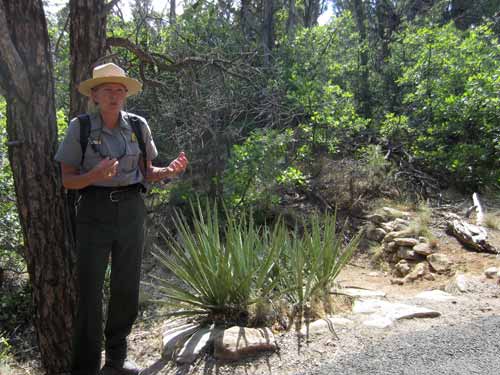
Abby with a yucca plant

A lizard listens in as well.

They built check dams for their crops.
We then headed down the cliff... on a modern trail, not how the natives used to do it!
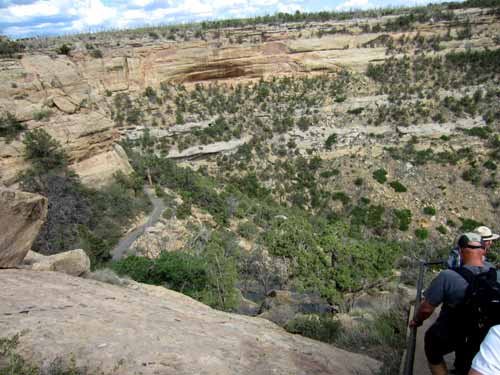
Heading down into the canyon

A look down the valley

This was the old path...

These people were agile climbers. Hand and toe hold trails were carved into the cliffs with stone tools. There was also the use of yucca fiber ropes and wooden ladders.

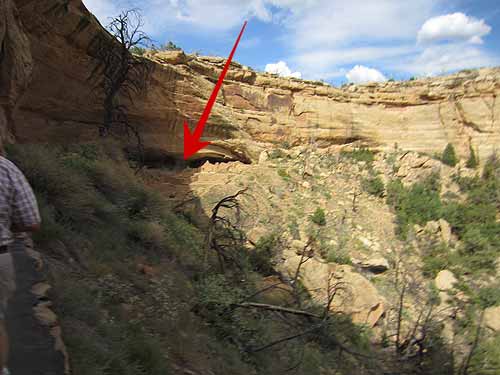
Arriving at Long House
We stopped and sat within view of the ruin for a bit while we learned some of its history.
Long House is the second largest cliff dwelling in Mesa Verde. It contains some 150 rooms, 21 kivas, and a large central plaza. 150 to 175 people could have lived here. This is just a guess based on that there are 28 rooms with fire hearths, with say an average of 5 people per family. Then again, we don't know if these were individual or community rooms.
Construction ran between 1145 and 1205. Then for unknown reasons, there was no building between 1205 and 1248, after which point it began again until 1279. There was apparently a series of fires in 1261 in some of the rooms and kivas. Were they intentional? We basically have more questions than answers.
The earliest rooms rest on fairly level ground, but later expansion upward and outward was difficult because of the steep slopes. More rubble was brought in to try to level things out, but then that required building on unstable ground, especially when required to support the great weight of upper stories.
It was customary practice to toss trash in front of the dwelling on the long talus slope. Food remains, broken pottery, old sandals, worn bone or stone tools and many other items were just tossed over the side. Archeologists also found 28 burials in the Long House trash dump, along with their associated artifacts (blankets, pottery, jewelry). Others were found buried in the rooms. There may be more but the policy is now to stop digging them up.


A photo of Long House shortly after its discovery
We followed the ranger into the ruins and all climbed up the steep set of ladders. Again we stopped for a bit to see some interesting features. In spite of how much she continually reminded people to be respectful, not to sit on the walls or touch anything, both adults and particularily uncontrolled children paid no heed. It must be both an extremely rewarding and extremely frustrating job.

The place was very echoey!


A chipmunk gives us a stern lecture about invading its home.
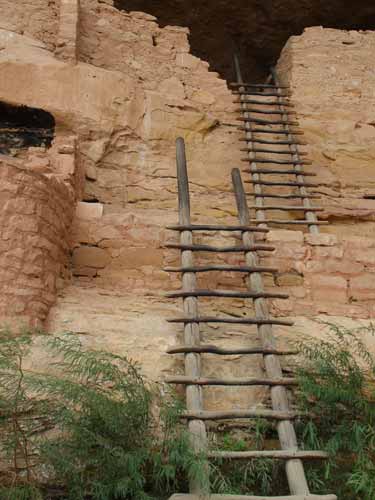
Our path!
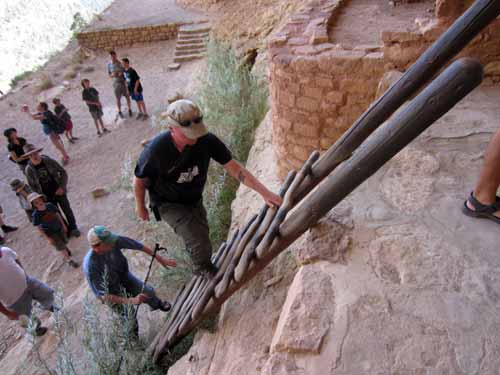

A sigh of relief that it's over!

Looking back down..

... and out across the lower ruins.

Some of the buildings were built taller so they could reach upper ledges in the cliff.

If you look carefully, you can see a tiny groove in the ground on the doorway on the left. This is where a ladder once rested.

Gustaf Nordenskiöld strikes again!
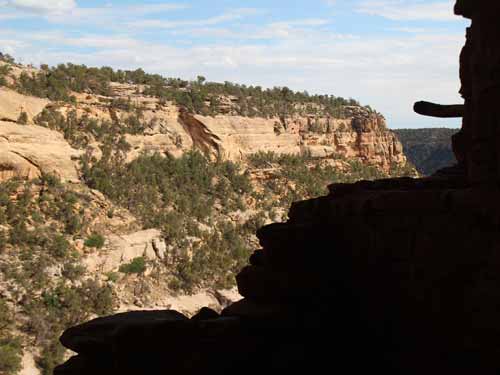
The lovely view these people would have had
In winter, the sun warmed the masonry of the cliff dwellings and warm breezes blew up from the valley. It was 10 to 20 degrees warmer in these canyon alcoves than on the top of the mesa. In summer, the dwellings were protected from direct sunlight.
There is no evidence of violence in Mesa Verde, so protection was probably not their main motivating factor to live in the alcoves. Most likely it was protection from the elements and a reliable water source.

A seep spring used to flow along the back of the alcove, providing fresh water.

Even during this time of drought, a trickle still flows.

Holes dug into floor filled with water, which made for the easy filling of ladles.

Imprints of corn. The corn of those days was much smaller than that of today. There were also several varieties. The harvested crops were stored in granaries, as protection from rodents. Planting and harvest information used to be passed down through the generations by means of songs.
The Hopi have 19 words for corn, based on its stages of development. Interestingly enough, they also have 19 words for the stages of human development.

Evidence of a fire

The building construction is called 'jacal.' It consists of slim poles tied together and filled in with mud, clay and grasses... or in this case, sun-baked mud and sandstone. It is similar to wattle and daub except that the poles are lashed together with cordage (this is more visible in the pithouses).

